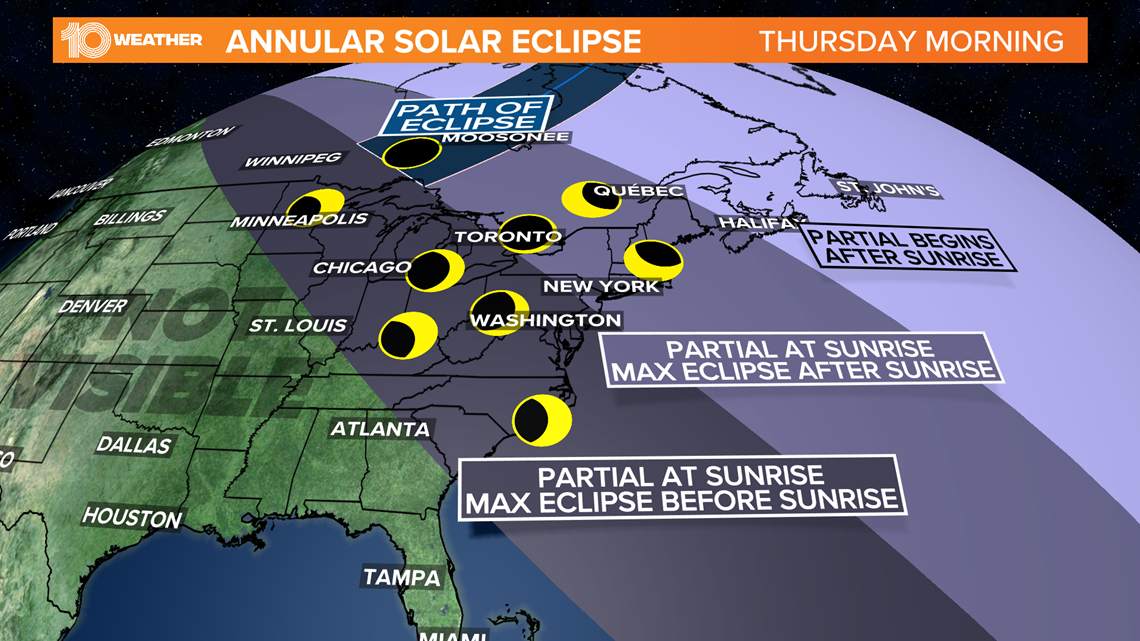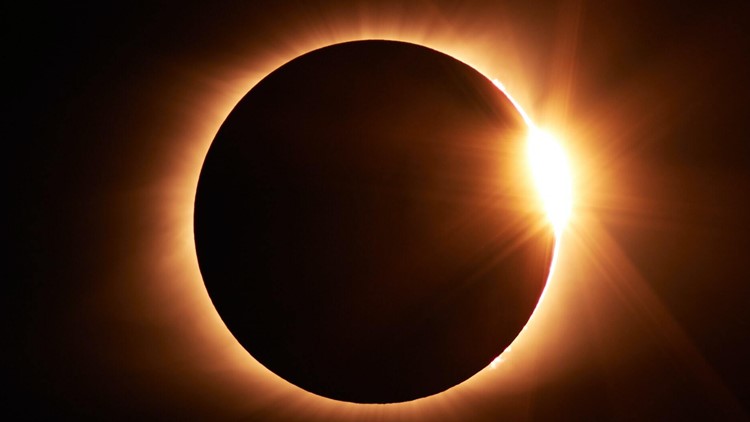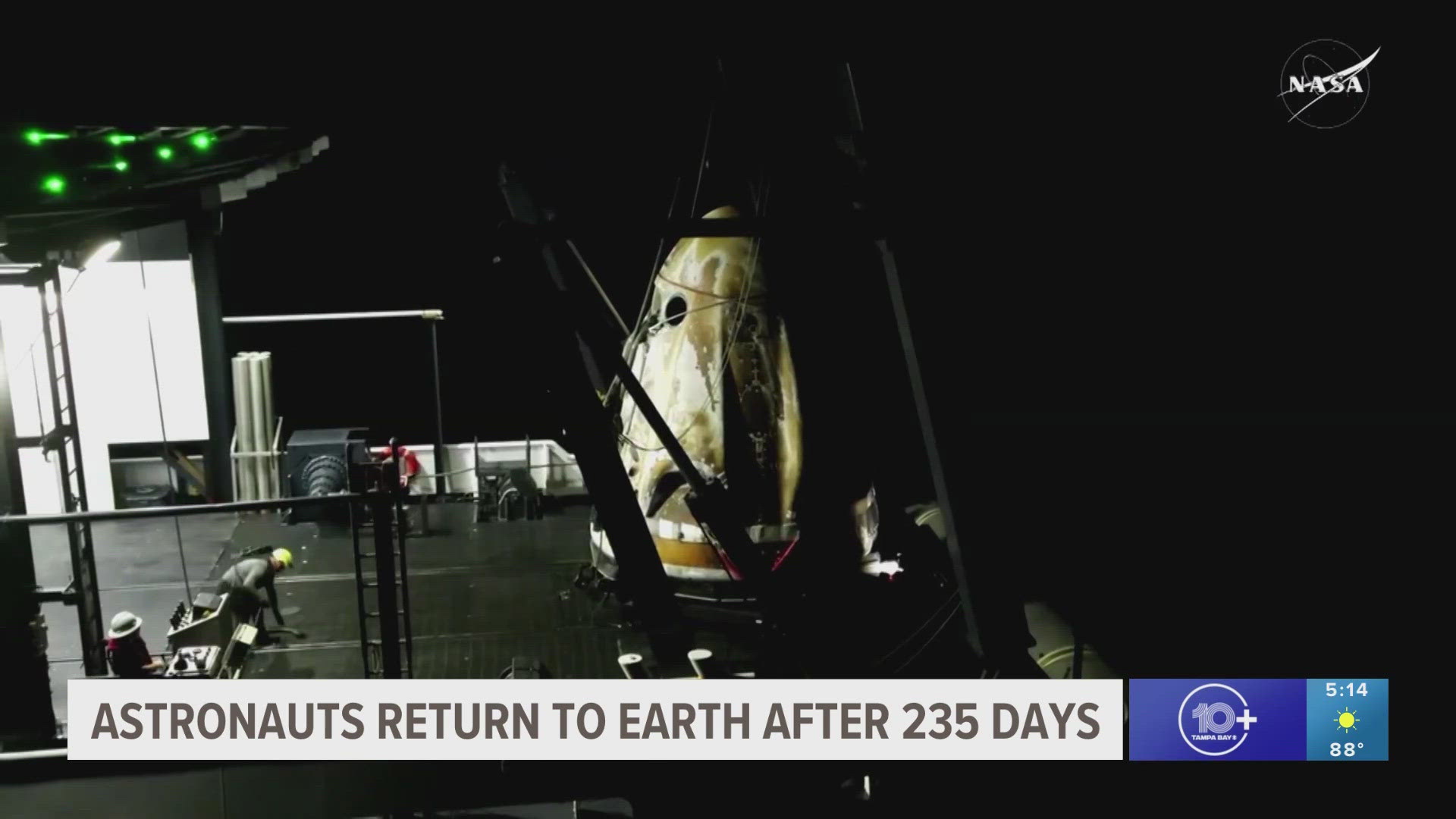ST. PETERSBURG, Fla. — A very fun event will take place in the morning sky Thursday — a solar eclipse. Unfortunately, this won’t be seen in Florida.
However, it’s still an interesting celestial event. A solar eclipse happens when the moon gets perfectly in between the Earth and sun and blocks out all or part of the sun while casting its shadow on Earth.
A solar eclipse can only take place at the phase of a new moon when the moon passes directly between the sun and Earth and its shadows fall upon Earth’s surface. This means the moon is virtually invisible to us since the sun isn’t able to illuminate our side of it.
Depending on the moon’s distance from Earth in its orbit around Earth during the eclipse, it will produce a total solar eclipse, a partial solar eclipse, an annular solar eclipse and sometimes something in between.
Space.com describes the various solar eclipses like this:
Total Solar Eclipse: This an amazing accident of nature. The sun has an 864,000-mile diameter which means it is 400 times greater than the moon. But the moon also happens to be about 400 times closer to Earth than the sun. When the new moon is in the perfect distance from Earth in its orbit, it can appear to completely block out the sun. That is a total solar eclipse. This happens somewhere on Earth about every 18 months.
Partial Solar Eclipse: A partial eclipse occurs when the sun and moon are not exactly in line with the Earth and the moon only partially obscures the sun.
Annular Solar Eclipse: This occurs when the sun and moon are exactly in line with the Earth, but the apparent size of the moon is smaller than that of the sun because the moon is too far from Earth in its elliptical orbit around our planet. When this happens, the sun appears to have a very bright ring, or annulus, surrounding the dark disk of the moon.
Hybrid Eclipse: This is also called an annular/total eclipse. It can occur when it shifts between a total and annular eclipse when certain locations on Earth see it as a total eclipse, and other locations see it as an annular eclipse. Hybrid eclipses are comparatively rare.
Thursday morning’s solar eclipse is an annular solar eclipse. NASA says that this eclipse is actually the opposite of the super lunar eclipse we had last month because it’s a new moon micromoon.
A micromoon is the opposite of a supermoon. While a supermoon is the closest a full or new moon gets to Earth in its orbit, a micromoon is the farthest a full or new moon gets from our planet.
The micromoon phase means it will come up just short of covering the sun entirely, leaving a sliver of the sun exposed just outside the moon. This is called the "ring of fire."
You can learn more about the annular solar eclipse here.


What other people are reading right now:
- 'Never seen or heard from...again': Tampa Bay mother of 3 still missing a year later
- Alligator attacks woman walking dog in Palm Harbor
- US likely to miss goal of 70% partially vaccinated by July 4
- Coughing at a Pinellas County beach? Red tide could be why
- 4-year-old shoots 6-year-old in Tampa, police say
►Breaking news and weather alerts: Get the free 10 Tampa Bay app
►Stay In the Know! Sign up now for the Brightside Blend Newsletter



